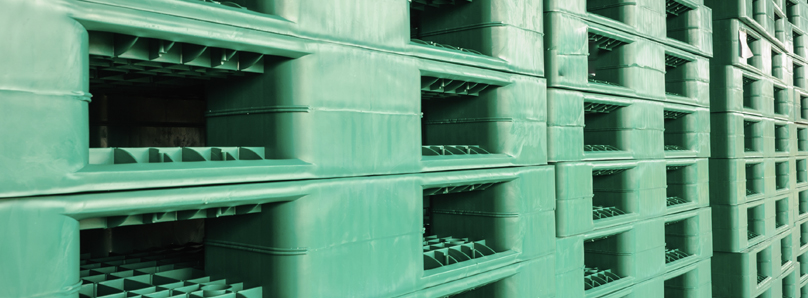How packaging can reduce your transport carbon footprint

Reducing their carbon footprint plays a key role in the Corporate Social Responsibility goals of many businesses. Indeed, large businesses are committed to Mandatory Greenhouse Gas Reporting by the UK Government. This reporting includes the impact of vehicle emissions and fuel use. So the race is on to make better use of transport resources. This will include finding greener vehicles, implementing route planning software to minimise fuel use and making optimum use of transport space. With these measures in place, you can reduce your carbon footprint.
If you’re not making the best use of vehicle space, then you will be hauling fresh air through your logistics operation. Maximising vehicle loads can play a key role in reducing the number of vehicle runs in your supply chain and ultimately helping to reduce carbon footprint.
Often, a simple switch in packaging can unlock a better utilised pay load space. Here are 3 ways in which packaging can help to reduce your transport carbon footprint.

Improve cubage
Is your box the right size for your products? Packaging that is too big requires extra infill and can use more space in your vehicles. Both bad of these outcomes are bad for the environment.
If you are using a “one size fits all” approach as a shipper carton, then it’s time to switch to a variety of sizes to better suit your product range. Your packer can then pick the optimum sized box for each shipment they pack.
If you are shipping odd shaped items, consider the overall packaging footprint. It may be that by orientating the pack differently you can make better use of the space.

Increase palletisation
If you are packing multiple inner boxes into a shipper carton for shipment on a pallet, ensure they fit tightly to maximise the space you have.
Reducing the size of your packages will help you transport more boxes in one go. This will also help you save on void fill and storage costs. If you can reduce your shipper carton by 3 centimetres in height, a pallet containing 10 layers could reduce by 30 centimetres – that’s potentially another layer of goods!

Reduce overall shipment weight
There may be some opportunities to take weight out of the overall shipment by reviewing the packaging. For example, heavy timber packs offer significant protection but add serious weight to your vehicle load. Consider lighter materials that offer the same high levels of protection but reduce total weight significantly.
The same applies to timber pallets, the average wooden pallet weighs approximately 20kg. In a vehicle load of 18 pallets, that’s 360kg of additional load weight, or 720kg if you are double stacking! There are lighter alternatives – plastic pallets, corrugate pallets and even pallet feet that attach directly to boxes instantly turning them into a pallet box.
If you would like advice on how to reduce your transport carbon footprint, contact Macfarlane Packaging today.

